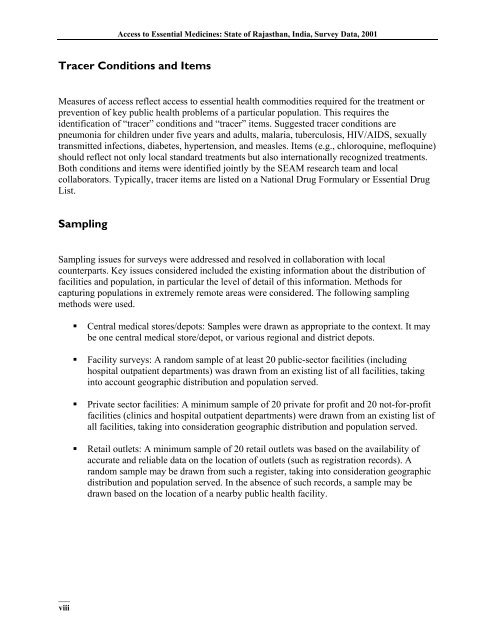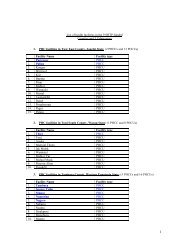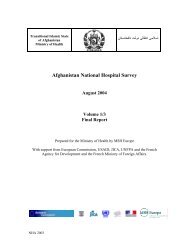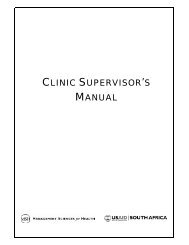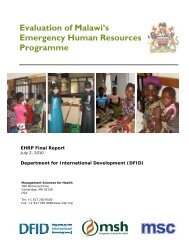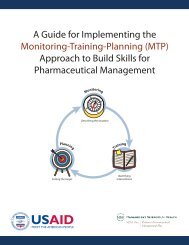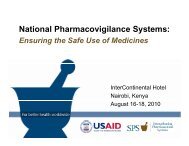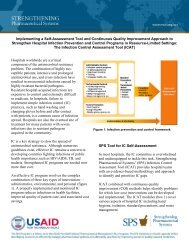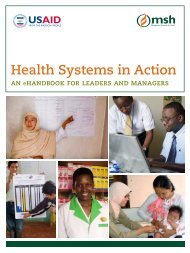India, Survey Data - Management Sciences for Health
India, Survey Data - Management Sciences for Health
India, Survey Data - Management Sciences for Health
You also want an ePaper? Increase the reach of your titles
YUMPU automatically turns print PDFs into web optimized ePapers that Google loves.
viii<br />
Access to Essential Medicines: State of Rajasthan, <strong>India</strong>, <strong>Survey</strong> <strong>Data</strong>, 2001<br />
Tracer Conditions and Items<br />
Measures of access reflect access to essential health commodities required <strong>for</strong> the treatment or<br />
prevention of key public health problems of a particular population. This requires the<br />
identification of “tracer” conditions and “tracer” items. Suggested tracer conditions are<br />
pneumonia <strong>for</strong> children under five years and adults, malaria, tuberculosis, HIV/AIDS, sexually<br />
transmitted infections, diabetes, hypertension, and measles. Items (e.g., chloroquine, mefloquine)<br />
should reflect not only local standard treatments but also internationally recognized treatments.<br />
Both conditions and items were identified jointly by the SEAM research team and local<br />
collaborators. Typically, tracer items are listed on a National Drug Formulary or Essential Drug<br />
List.<br />
Sampling<br />
Sampling issues <strong>for</strong> surveys were addressed and resolved in collaboration with local<br />
counterparts. Key issues considered included the existing in<strong>for</strong>mation about the distribution of<br />
facilities and population, in particular the level of detail of this in<strong>for</strong>mation. Methods <strong>for</strong><br />
capturing populations in extremely remote areas were considered. The following sampling<br />
methods were used.<br />
� Central medical stores/depots: Samples were drawn as appropriate to the context. It may<br />
be one central medical store/depot, or various regional and district depots.<br />
� Facility surveys: A random sample of at least 20 public-sector facilities (including<br />
hospital outpatient departments) was drawn from an existing list of all facilities, taking<br />
into account geographic distribution and population served.<br />
� Private sector facilities: A minimum sample of 20 private <strong>for</strong> profit and 20 not-<strong>for</strong>-profit<br />
facilities (clinics and hospital outpatient departments) were drawn from an existing list of<br />
all facilities, taking into consideration geographic distribution and population served.<br />
� Retail outlets: A minimum sample of 20 retail outlets was based on the availability of<br />
accurate and reliable data on the location of outlets (such as registration records). A<br />
random sample may be drawn from such a register, taking into consideration geographic<br />
distribution and population served. In the absence of such records, a sample may be<br />
drawn based on the location of a nearby public health facility.


